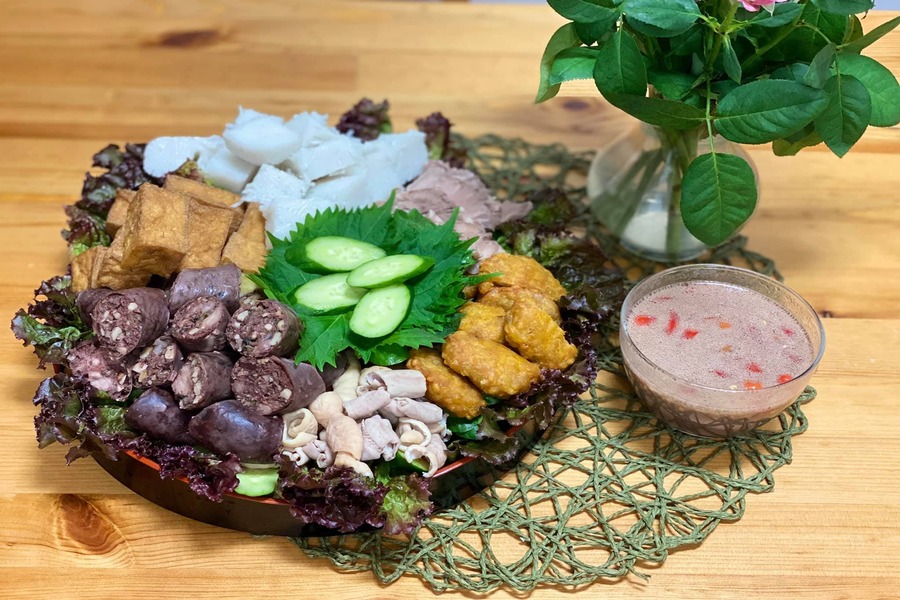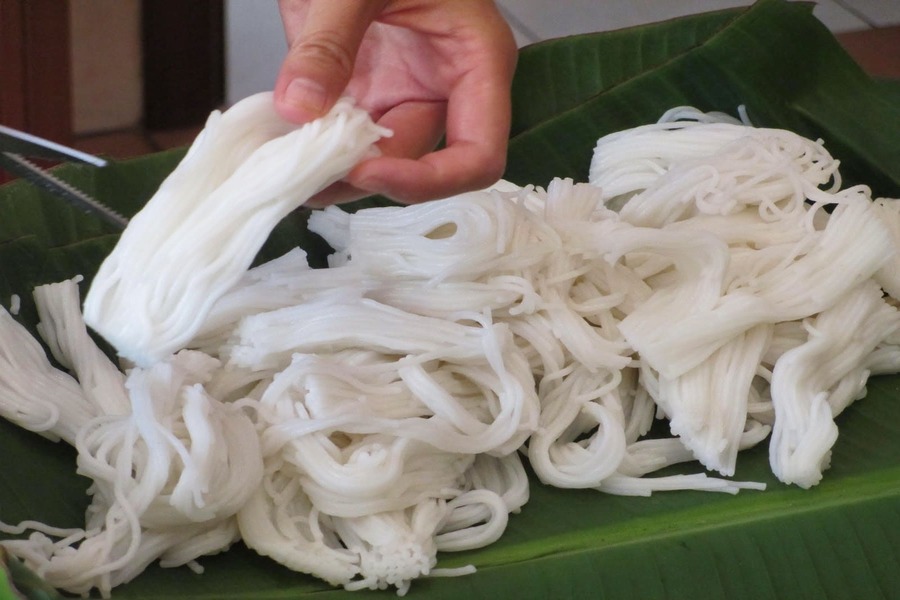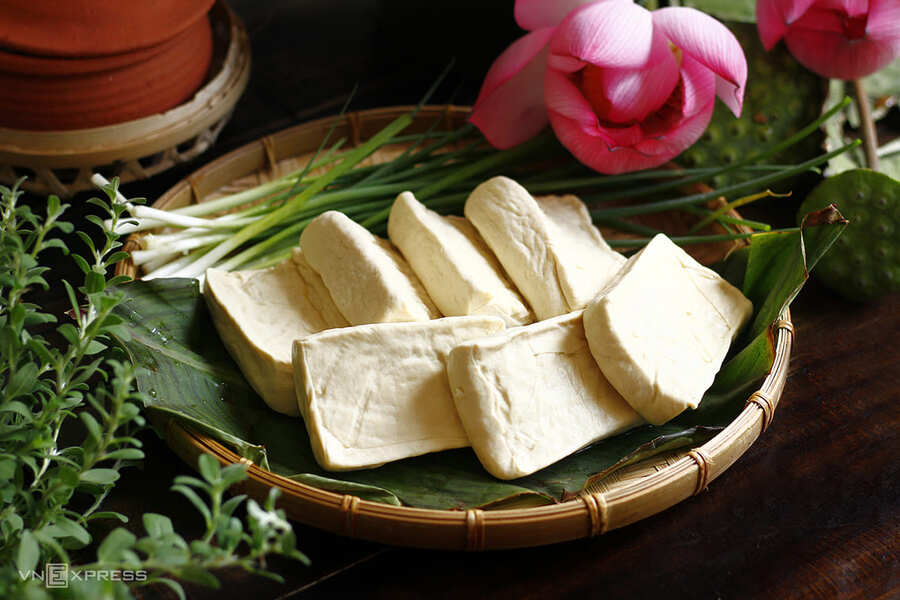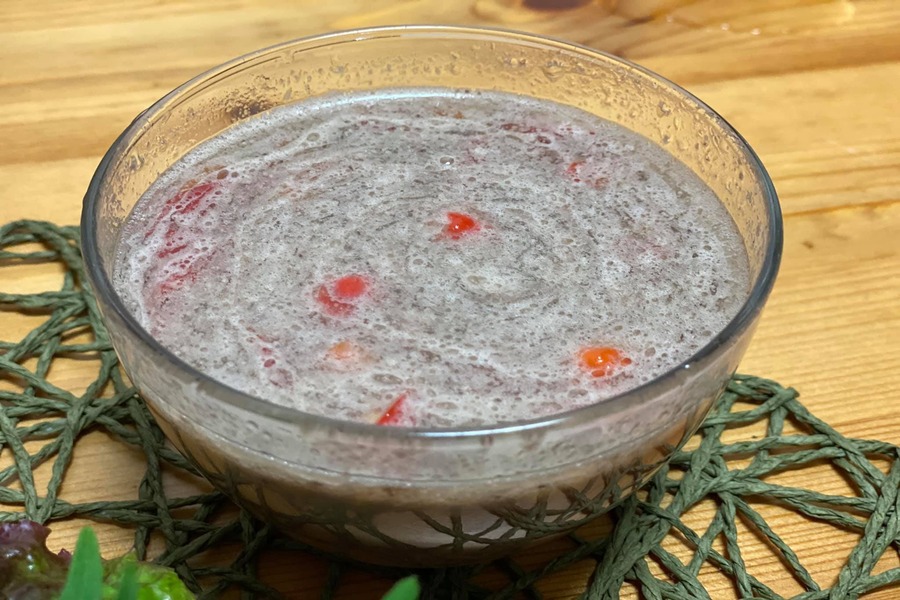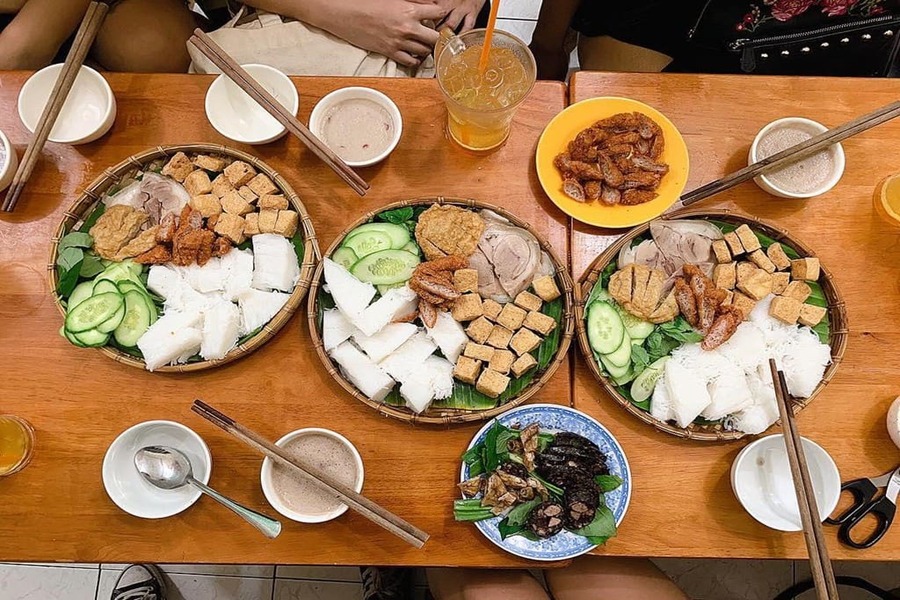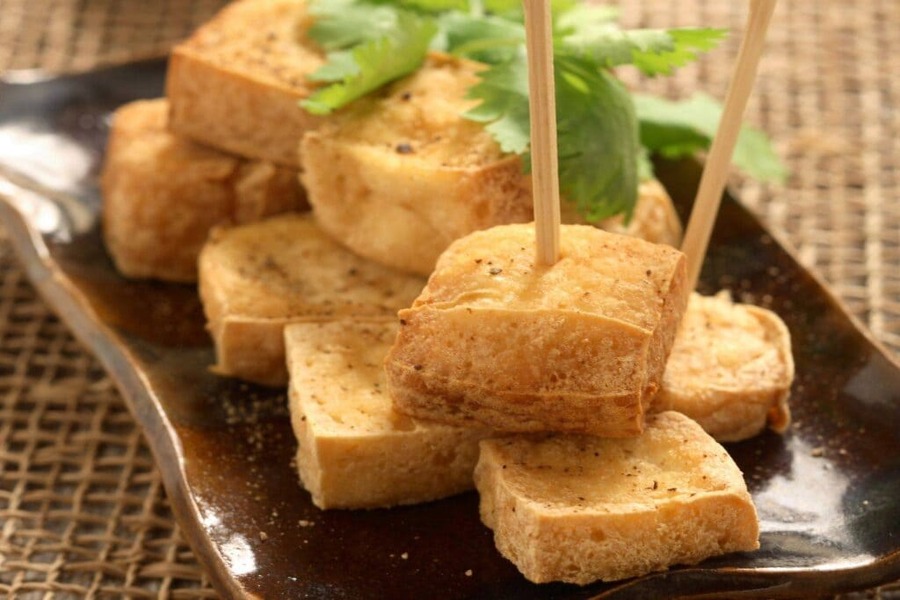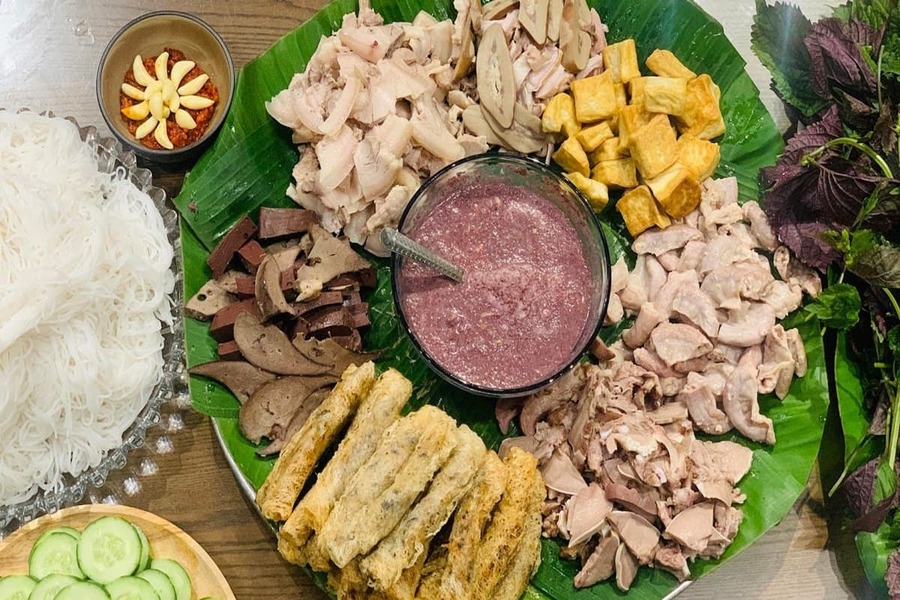Bún Đậu Mắm Tôm is one of Vietnam’s most iconic and beloved dishes, offering a perfect combination of savory, crispy, and aromatic flavors. While it may not be as internationally renowned as some other Vietnamese staples like pho or bánh mì, Bún Đậu Mắm Tôm is a must-try dish for anyone wanting to truly experience the soul of Vietnamese street food, especially in the capital city of Hanoi.
Introduction to Bun Đau Mam Tom
This simple yet flavorful dish features rice vermicelli noodles (bún), crispy fried tofu (đậu), and the signature shrimp paste sauce (mắm tôm), creating a harmonious blend of textures and tastes. Despite its simplicity, Bún Đậu Mắm Tôm carries deep cultural significance and is a favorite among locals, particularly in Northern Vietnam. It’s commonly enjoyed as a hearty meal for breakfast, lunch, or dinner, and can be found at street vendors, local eateries, and even in high-end restaurants. The dish reflects the essence of Vietnamese cuisine – fresh ingredients, bold flavors, and a sense of community around shared meals.
Bún Đậu Mắm Tôm holds a special place in the hearts of Hanoians, where the dish is particularly popular and has become a staple of the city’s culinary identity. In fact, this dish is often considered a quintessential Hanoi experience, providing a snapshot of the city’s street food culture and culinary traditions.
Main Ingredients in Bun Đau Mam Tom
The ingredients of Bún Đậu Mắm Tôm may seem simple, but each one plays an essential role in delivering the dish’s unique taste and texture. Here’s a closer look at the key components:
Bún (Rice Vermicelli Noodles)
The foundation of the dish is “bún”, a type of rice vermicelli noodle that is soft, slightly chewy, and serves as the perfect base for the tofu and “mắm tôm”. The noodles are typically boiled to perfection, providing a light and neutral texture that absorbs the bold flavors of the sauce and the tofu. Not only in Bún Đậu Mắm Tôm, you will see this ingredient being used in a lot of Vietnamese dishes in your Vietnam tours.
Đậu (Fried Tofu)
Next, we have đậu – fried tofu. This is a key component of Bún Đậu Mắm Tôm, as the crispy outer layer and soft, spongy interior provide a wonderful contrast to the delicate noodles and savory sauce. The tofu is usually deep-fried until golden brown, resulting in a crunchy texture on the outside while maintaining its silky softness inside.
Mắm Tôm (Fermented Shrimp Paste)
The mắm tôm, or fermented shrimp paste, is what truly gives this dish its distinct flavor. Often considered an acquired taste due to its strong, pungent aroma, mắm tôm is made by fermenting shrimp with salt. It has a salty, umami-rich taste that pairs exceptionally well with the tofu and noodles. The shrimp paste is usually mixed with garlic, lime juice, sugar, and chili to create a thick, flavorful sauce that is drizzled generously over the dish.
Optional Additions: Boiled Pork, Fresh Herbs, and More
While the basic version of Bún Đậu Mắm Tôm focuses on the noodles, tofu, and shrimp paste sauce, many variations of the dish include additional elements such as boiled pork (often pork belly or pork shoulder) for extra richness and flavor. Fresh herbs like cilantro, mint, and lettuce are often added to bring a refreshing contrast to the dish’s savory components, while pickled vegetables can add an extra layer of tanginess.
Each region and vendor may have their own take on this dish, offering slight variations in ingredients and preparation to suit different tastes.
How Bun Đau Mam Tom is Prepared
Preparing Bún Đậu Mắm Tôm requires a few simple steps, but it’s the attention to detail that ensures the perfect combination of flavors and textures. The preparation process is straightforward but requires some patience to get the tofu crispy and the shrimp paste sauce just right. Here’s a step-by-step guide to making this delicious dish:
1. Prepare the Rice Vermicelli Noodles (Bún)
Start by cooking the bún (rice vermicelli noodles). These noodles are typically sold in bundles, and you’ll need to boil them in water for about 3 to 5 minutes until they’re soft and tender but still slightly chewy. Once cooked, drain the noodles and rinse them under cold water to stop the cooking process and help them retain their texture. Set them aside to drain completely.
2. Fry the Tofu (Đậu)
Next, prepare the đậu (fried tofu). For Bún Đậu Mắm Tôm, the tofu should be crispy on the outside but soft on the inside. To achieve this, cut firm tofu into small cubes or triangles and pat them dry to remove excess moisture. Heat a generous amount of vegetable oil in a frying pan over medium-high heat. Once the oil is hot, carefully add the tofu pieces and fry them until they are golden brown and crispy on all sides. This typically takes about 5 to 7 minutes. Once the tofu is done, remove it from the pan and place it on a paper towel to drain excess oil.
3. Make the Shrimp Paste Sauce (Mắm Tôm)
The mắm tôm (fermented shrimp paste) is the heart of the dish and gives it its distinctive flavor. To prepare the sauce, start by placing a small amount of shrimp paste into a bowl. To balance the intense saltiness of the paste, you’ll need to mix it with fresh ingredients. Add finely minced garlic, lime juice, and sugar to the shrimp paste, adjusting the quantities based on your taste preferences. Some people like it sweeter, while others prefer a more savory flavor.
For some added heat, mix in chili (either fresh or dried) depending on how spicy you like the sauce. Once everything is combined, use a spoon or whisk to stir the ingredients together until the mixture becomes smooth and well-blended. The result should be a thick, pungent sauce with a balance of salty, sweet, tangy, and spicy flavors.
4. Assemble the Dish
Now that all the components are prepared, it’s time to assemble your Bún Đậu Mắm Tôm. In a large plate or bowl, place a portion of the cooked rice noodles as the base. Add a few pieces of crispy fried tofu on top of the noodles. If you’re using additional ingredients like boiled pork or fresh herbs, arrange them on the side or atop the noodles for extra flavor and visual appeal.
Generously drizzle the shrimp paste sauce over the tofu and noodles, ensuring that everything is well-coated. You can also add fresh lettuce, cilantro, and mint as garnishes to give the dish a refreshing contrast to the rich flavors of the shrimp paste and tofu.
5. Serving and Enjoying
Bún Đậu Mắm Tôm is best served immediately while the tofu is still crispy and the noodles are fresh. Traditionally, the dish is enjoyed with pickled vegetables like pickled carrots and daikon, which add a crunchy, tangy contrast to the savory dish. You can also serve it with additional chili for those who like a little extra spice.
The Flavor Profile of Bun Đau Mam Tom
Bún Đậu Mắm Tôm is a dish celebrated for its bold, unique, and complex flavor profile. It masterfully balances a combination of salty, savory, and fresh flavors that dance on the palate, making each bite an unforgettable experience.
Salty and Savory: The key ingredient in this dish that provides the salty, umami-rich flavor is mắm tôm (fermented shrimp paste). It’s a pungent and briny paste, often mixed with lime juice, sugar, garlic, and chili, creating a savory, aromatic sauce that envelops the other ingredients. When paired with the crispy fried tofu (đậu), the mắm tôm sauce not only adds flavor but also softens the tofu, creating a delightful contrast between the crispy exterior and the smooth interior. The rice vermicelli noodles (bún) provide a neutral base that balances the intensity of the shrimp paste.
Freshness: Freshness in Bún Đậu Mắm Tôm is introduced by the addition of herbs like cilantro, mint, and sometimes lettuce. These herbs bring a crisp, refreshing element to the dish, counteracting the richness of the fried tofu and shrimp paste sauce. Additionally, pickled vegetables such as carrots and daikon are often served as side condiments, providing a tangy contrast that elevates the entire flavor experience.
Heat: For those who enjoy spice, chili is often included either in the shrimp paste sauce or served on the side, allowing for an extra layer of warmth that intensifies the flavors.
Overall, the balance between the salty, savory mắm tôm, the crispiness of the tofu, the delicate noodles, and the fresh, aromatic herbs results in a harmonious dish that is both rich and refreshing.
Cultural Significance of Bun Đau Mam Tom
Bún Đậu Mắm Tôm holds a significant place in Vietnamese culinary tradition, especially in the northern regions. It is more than just a dish; it is a cultural experience that reflects the simplicity and depth of Vietnamese food culture.
The Role of Bún Đậu Mắm Tôm in Vietnamese Food Culture
As a beloved street food, Bún Đậu Mắm Tôm showcases the Vietnamese philosophy of balancing flavors and textures. This dish epitomizes the use of locally sourced ingredients—fresh herbs, tofu, rice noodles, and fermented shrimp paste—highlighting the importance of preserving and respecting local flavors. The dish is incredibly popular in Hanoi, where it has become a symbol of the region’s street food culture. While it can also be found in other parts of Vietnam, Hanoi is considered the birthplace of this dish, with many of its best-known establishments offering their unique takes on the recipe.
In addition to being a street food favorite, Bún Đậu Mắm Tôm is often served at home, especially in gatherings with family or friends. The simplicity of its ingredients belies its deep cultural significance. The dish is often seen as a way to bring people together, with the act of sharing food emphasizing the importance of community and connection in Vietnamese society.
How It Is Traditionally Enjoyed: From Street Vendors to Home Meals
When enjoyed from street vendors in Hanoi or other cities, Bún Đậu Mắm Tôm is typically served in a small bowl or on a plate, and customers often enjoy it standing or sitting on low plastic stools along the sidewalk. This casual way of eating is an integral part of the Vietnamese street food experience, where locals gather for quick yet satisfying meals in between their daily routines.
At home, Bún Đậu Mắm Tôm takes on a more leisurely pace. It’s often part of a larger meal, enjoyed with loved ones during a break from the day. The dish offers a sense of comfort and familiarity that is cherished in Vietnamese homes.
Where to Find the Best Bun Đau Mam Tom
Finding the best Bún Đậu Mắm Tôm means venturing to places where the dish is made with care and passion, with the freshest ingredients and the most balanced flavors.
In Hanoi:
If you’re in Hanoi, there are a few legendary spots where you can experience authentic Bún Đậu Mắm Tôm:
- Bún Đậu Mắm Tôm Hàng Lược – A local favorite for decades, known for its crispy tofu and rich shrimp paste sauce.
- Bún Đậu Mắm Tôm Cây Đa – Another well-known place offering a delicious, traditional version of the dish, loved for its quality ingredients and flavorful shrimp paste.
In Ho Chi Minh City:
Though the dish originated in the north, you can still find delicious versions of Bún Đậu Mắm Tôm in the southern city of Ho Chi Minh City, where it has been adapted and embraced by the locals. Popular spots include:
- Bún Đậu Mắm Tôm Nguyễn Thị Minh Khai – A recommended spot for those craving authentic northern-style Bún Đậu Mắm Tôm with a southern twist.
- Bún Đậu Mắm Tôm Chợ Lớn – Known for its generous portions and crispy tofu, this place is a must-visit for anyone in the city looking to try this classic dish.
How to Enjoy It Authentically:
To truly enjoy Bún Đậu Mắm Tôm the authentic way, take the time to savor the flavors and textures in each bite. The mắm tôm should be stirred into the noodles and tofu, and a squeeze of lime will add an extra burst of freshness. Don’t forget to try the dish with pickled vegetables and fresh herbs to complete the experience. If you like your food with a bit of heat, feel free to add fresh chili to give it an extra kick.
Exploring local vendors and home-cooked versions will not only provide you with the best Bún Đậu Mắm Tôm but also allow you to understand the dish’s deep roots in Vietnamese culinary culture. Whether you’re in the north or south, this dish is a must-try experience that will take you right into the heart of Vietnam’s rich food traditions.

